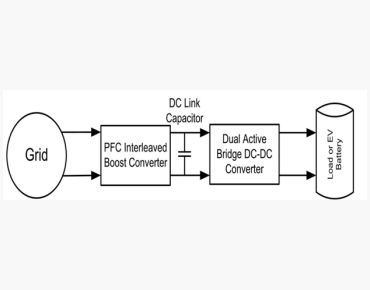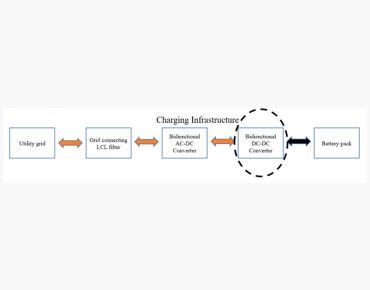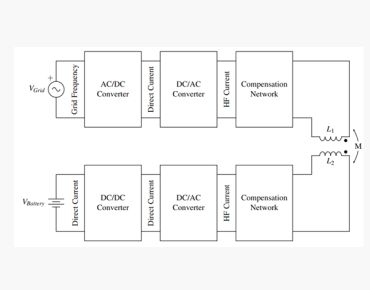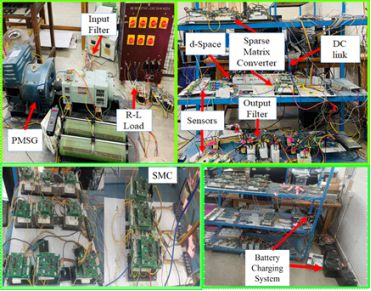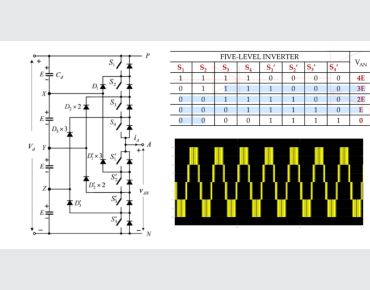Our Research Area
This research aims to revolutionize electric vehicle charging technology by investigating and implementing modern control techniques for existing DC-DC converters in fast charging schemes. Additionally, it explores suitable techniques for State-of-Charge estimation in EV battery packs, integrates solar into fast charging infrastructure, predicts peak power management for solar V2G applications, and innovates novel DC-DC converter topologies for efficient battery charging
Bidirectional DC-DC converters are the frontrunners for battery powered electric vehicles, rendering both G2V and V2G applications. Efficiency is a primal concern while such a converter is designed for high power density along with compact low volume design for EV charging and drivetrain applications. This research targets designing novel single port and multiport as well as isolated and non-isolated DC-DC converters for battery-interfaced applications and aims at optimal design for high efficiency DC-DC converter architecture.
Global warming is the primary concern for the whole world due to the increase in carbon emissions. EVs are a significant step towards net carbon emission reductions. However, it has some limitations for global acceptance, such as range extension, higher cost, waiting at charging stations, and safety. Wireless Charging provides a great solution to these problems. It is an automatic charging method. Using static or dynamic wireless charging modes, it can charge vehicles automatically while running and in stationary conditions and reduce the time for waiting at the charging station. This research covers the design and investigation of Wireless power transfer methods for EV charging and optimal control of primary and secondary sides to maximise efficiency and regulate the voltage and currents for battery charging.
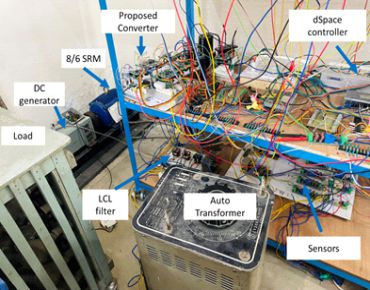 height: 150px;>/figure>
Investigation on Multi level Converter fed SRM drive
height: 150px;>/figure>
Investigation on Multi level Converter fed SRM drive
To comprehensively investigate the benefits, challenges, and potential advancements associated with using multilevel converters to control SRM drives. The research explores how these converters can be effectively integrated with SRM technology to improve motor drive efficiency, reduce energy consumption, and enhance overall system performance. The investigation involves theoretical analysis, simulation studies, and experimental validation to assess the feasibility and effectiveness of multilevel converter-fed SRM drives in various applications, including industrial automation, electric vehicles, and renewable energy systems. The research aims to contribute valuable insights and practical solutions for optimizing SRM drives through advanced power electronics technologies, ultimately promoting energy efficiency and sustainability in electric drive applications.
The research article introduces an innovative application of a tailored Space Vector Pulse Width Modulation (SVPWM) technique, integrating a Sparse Matrix Converter (SMC) within the realm of Wind Energy Conversion Systems (WECs). Another novelty is incorporated in the work by integrating a battery charging system in the DC link of SMC to achieve wind farm commitment. A novel impedance network is integrated with the SMC to boost up the voltage at the load end during low wind speed conditions.
A multilevel inverter is a power electronic device used to convert direct current (DC) power into alternating current (AC) power with multiple voltage levels. Unlike conventional two-level inverters, which only produce two voltage levels (positive and negative), multilevel inverters can generate several voltage levels, typically three or more. These inverters are designed to overcome limitations such as voltage stress on power switches, harmonic distortion, and output waveform quality. By producing multiple voltage levels, they can achieve better voltage waveform quality, reduced total harmonic distortion (THD), and lower switching losses compared to traditional inverters. There are various topologies of multilevel inverters, including diode-clamped (neutral-point clamped), capacitor-clamped (flying capacitor), and cascaded H-bridge. Each topology has its own advantages and disadvantages in terms of complexity, cost, efficiency, and performance. Multilevel inverters find applications in renewable energy systems, electric vehicles, motor drives, grid-connected systems, and high-voltage direct current (HVDC) transmission systems. Their ability to produce high-quality AC waveforms with lower harmonic distortion makes them suitable for sensitive loads and applications where precise control of AC voltage is required.

